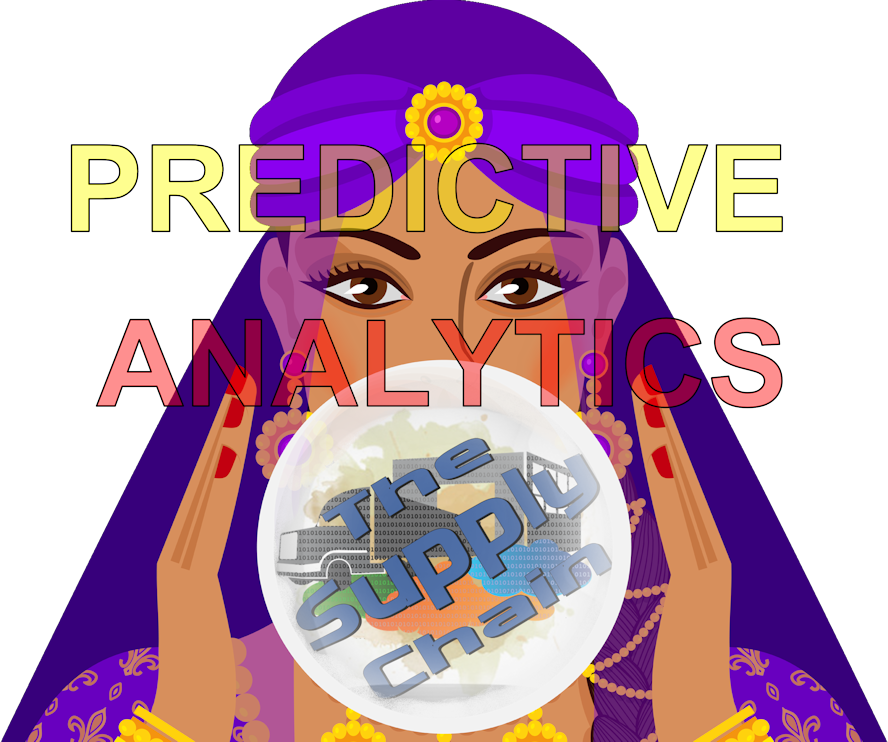Humans have always been curious about what the future holds. As a result, they have visited oracles and soothsayers since the beginning of recorded history. One of the early tools used by soothsayers was the crystal ball. According to Wikipedia, “In the 1st century CE, Pliny the Elder describes use of crystal balls by soothsayers (‘crystallum orbis’, later written in Medieval Latin by scribes as orbuculum).”[1] Although most people dismiss fortune telling as quackery, it doesn’t mean they aren’t interested in knowing more about what the future may hold. Business leaders are no exception. They spend enormous sums on planning and forecasting technologies. One of the most recent tools being adopted by businesses is predictive analytics. As the introduction to an edited volume on the subject explains, “Predictive analytics is the art and science of proposed predictive systems and models. With tuning over time, these models can predict an outcome with a far higher statistical probability than mere guesswork. Predictive analytics plays an essential role in the digital era. Most business strategies and planning depend on prediction and analytics using statistical approaches.”[2]
The Value of Predictive Analytics
In spite of advances in predictive analytics, they aren’t the equivalent of a modern-day crystal ball. Predictions are only as good as the data available and how well that data can be extrapolated into the future. Regardless, as the academics noted above, predictive analytics are far better than guesswork. Freelance writer Bob Violino (@BobViolino) observes, “Predictive analytics has become an increasingly important tool for businesses as they look to make better use of all the data they’re gathering. Machine learning (ML) can provide even more punch to analytics, giving enterprises an even more powerful data resource.”[3] Independent business consultant Thomas Dinsmore told Violino, “[Machine learning techniques for predictive analytics] tend to outperform statistical techniques for prediction problems.” He added, “When organizations deploy machine learning broadly, they improve the efficiency and effectiveness of business processes. Business gains depend on how and where the organization deploys predictions.”
More precisely, business gains depend on how companies use predictions to make better decisions. As Bain analysts Michael C. Mankins and Lori Sherer (@lorisherer) report, “We know from extensive research that decisions matter — a lot. Companies that make better decisions, make them faster and execute them more effectively than rivals nearly always turn in better financial performance. Not surprisingly, companies that employ advanced analytics to improve decision making and execution have the results to show for it.”[4] Nevertheless, there are reasons for caution. Machine learning expert Bernard Brode explains, “There are more than a few examples of ML failing to make reliable (or even useful) predictions.”[5] He elaborates, “ML algorithms fail for two major reasons. One is when users are actively trying to subvert the model that the ML system has been trained on. … The second major reason for failure occurs when human behavior abruptly changes. This is seen most commonly in shopping algorithms, not least because this is where ML models are commonly applied.”
For purposes of this article, I am assuming your company doesn’t have anyone trying to subvert your machine learning model. That leaves us with the second major reason predictions fail: changing human behavior. Shakespeare wrote, “What’s past is prologue.” For most of history, that statement holds true — and, when it does hold true, predictive analytics can have enormous benefits. When human behavior changes significantly, predictive analytics must rely more on real-time data than on historical data until new patterns of behavior become clear.
Even during volatile times, however, predictive analytics can be useful. Srini Bharadaway, former Chief Technology Officer at Genpact, explains, “Machine learning can serve virtually any industry and purpose, but especially in predictive analysis. For instance, … in shipping and logistics, machine learning models can analyze data on inventory, transit routes, truck location, etc. to accurately determine when a package will reach its destination. … Equipped with the right data from the beginning, these systems can discover hidden patterns and uncover valuable information so you can always stay one step ahead of the game.”[6]
Predictive Analytics in the Supply Chain
There are a number of other ways that predictive analytics can be useful for supply chain operations beyond those identified by Bharadaway. The staff at Intelligent Audit notes, “There is a lot of talk within the supply chain industry regarding the value supply chain predictive analytics.”[7] They add, “By addressing general trends and looking at what may happen down the line, managers can be better prepared by taking steps sooner rather than later. Supply chain predictive analytics makes such a thing possible. If trends over the last few years show seasonal spikes for the holidays, managers can use the predictive data to begin preparing ahead of time and ease into things with less stress. And as the value of analytics has grown, it’s now possible to look beyond yearly data. In other words, companies can compare week-over-week and day-over-day trends to create a practical plan of action. That is the power of embracing supply chain predictive analytics.”
Journalist Amanda Loudin (@MissZippy1) isn’t sure the potential for predictive analytics in warehouse operations is ready to be realized. She explains, “Still relatively new in the supply chain arena, [predictive analytics] promises to help companies become proactive rather than reactive with their systems. The potential for cost savings and reduced downtime is enticing, but the question remains whether the technology is ready in for areas of the warehousing environment. In particular, facilities are still sorting out the current value of predictive analytics in regards to maintenance, repair and operations (MRO). While the technology certainly shows potential, and is proving itself out in other areas, predictive analytics with MRO may not quite be ready for prime time.”[8] Her skepticism isn’t really about the value of predictive analytics, rather it’s the fact that many warehouses simply aren’t connected enough for the technology to be useful. She explains, “To get there, warehouse managers should prioritize the implementation of digital data collection while the equipment is running. Also, leverage cost-effective sensors from other industries, and build digital networking technologies into the equipment to liberate the data.”
Mike Hulbert, Vice President of consumer business at Noodle.ai, has no such reservations about the need for or usefulness of predictive analytics in most supply chain operations. He explains, “There’s an inescapable fact that is clear to me: The planning systems we have used for the last 20 years have a huge gap. They fail to ‘see’ a huge number of exceptions that will occur in the next 12 weeks.”[9] He adds, “There is now a capability with AI to truly augment planning teams — making them dramatically more effective. Advances in computing, data storage and machine learning support planning capabilities that were not possible five years ago. Powerful capabilities ingest massive data sets, find relationships, predict future outcomes, and recommend new actions that planners understand. Planners shift from a work day primarily focused on cutting up data to find exceptions and validate information, to one where they have a precise understanding of issues that need a human planner to problem solve.” Hulbert suggests five areas where supply chain predictive analytics can be especially useful: Predicting supply-demand imbalances across the network; optimizing inventory management; augmenting demand planning and forecasting; identifying and unlocking value-at-risk (VAR); and, improving product quality.
Concluding Thoughts
At Enterra Solutions®, we developed the Enterra Global Insights and Decision Superiority System™ to help organizations discover competitive market insights and actions, improve enterprise decision-making, leverage advanced models/simulations; and utilize competitive business wargaming to position themselves better for the future. All of these activities can help improve predictions and, combined, can provide business leaders with something approaching a modern orbuculum that can be used to improve decision-making. Hulbert concludes, “There will always be complexity and volatility in the supply chain. That is inevitable. But by bringing AI into the CG supply chain now, companies will be better prepared to respond to future disruptions, big and small, and keep goods flowing.”
Footnotes
[1] “Crystal Ball,” Wikipedia.
[2] Bentham Science Publishers, “Predictive analytics and big data technologies,” EurekAlert!, 24 December 2020.
[3] Bob Violino, “Machine learning adds punch to predictive analytics,” ZDNet, 3 April 2017.
[4] Michael C. Mankins and Lori Sherer, “Creating value through advanced analytics,” Bain Brief, 11 February 2015.
[5] Bernard Brode, “Where Predictive Machine Learning Falls Short and What We Can Do About It,” insideBIGDATA, 27 June 2020.
[6] Srini Bharadaway, “Machine learning gives organizations a leg-up on predictive analytics,” Information Management, 22 January 2018 (out of print).
[7] Staff, “What are Supply Chain Predictive Analytics?” Intelligent Audit blog, 5 January 2021.
[8] Amanda Loudin, “Is it prime time for predictive technology in MRO?” Supply Chain Dive, 27 August 2019.
[9] Mike Hulbert, “5 Ways Predictive AI Can Keep CG Supply Chains Flowing,” Consumer Goods Technology, 12 May 2021.





